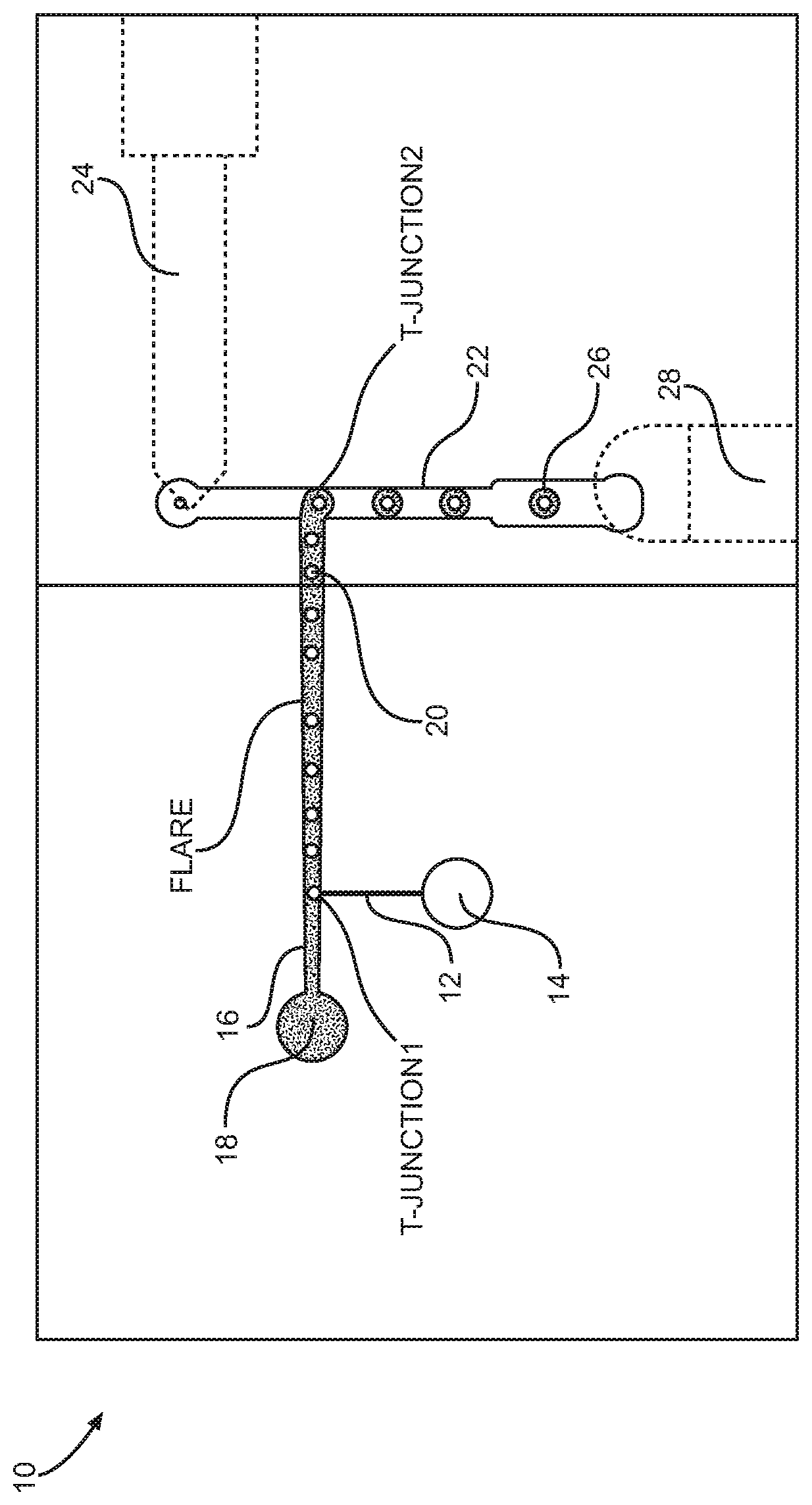Residue free electrically conductive material
a conductive material and residue-free technology, applied in the direction of conductive core details, cable/conductor manufacturing, metal/alloy conductors, etc., can solve the problems of limiting the structurally dictated electromagnetic properties of interconnects, high stretching cannot be achieved, and limiting the conductivity of electrically conductive materials, etc., to achieve superior material solutions and low conductivity
- Summary
- Abstract
- Description
- Claims
- Application Information
AI Technical Summary
Benefits of technology
Problems solved by technology
Method used
Image
Examples
Embodiment Construction
[0019]In hopes of achieving a more elegant, versatile, and robust solution to stretchable conductors, researchers have been examining eutectic blends of Gallium-Indium (eGaIn) and Gallium-Indium-Tin (GaInSn) in earnest as these room temperature liquid metal alloys are inherently stretchable, are non-toxic, and have excellent conductivity. Several groups have already begun to explore the use of Gallium liquid metal alloys (GaLMAs) in multiple FSE applications including strain gauges, stretchable capacitors, reconfigurable antennas, and self-healing circuits.
[0020]Embodiments of the disclosure provide a method to encapsulate a GaLMA liquid conductor within a conductive elastomeric shell. The elastomeric shell may be formed by means of core-shell microfluidic encapsulation process. The encapsulation process involves linear channels such that one channel will confine the core material (in this case the liquid GaLMA), one channel will contain the shell material (pre-cured elastomer), and...
PUM
| Property | Measurement | Unit |
|---|---|---|
| thickness | aaaaa | aaaaa |
| volume | aaaaa | aaaaa |
| mean particle diameter | aaaaa | aaaaa |
Abstract
Description
Claims
Application Information
 Login to View More
Login to View More - R&D
- Intellectual Property
- Life Sciences
- Materials
- Tech Scout
- Unparalleled Data Quality
- Higher Quality Content
- 60% Fewer Hallucinations
Browse by: Latest US Patents, China's latest patents, Technical Efficacy Thesaurus, Application Domain, Technology Topic, Popular Technical Reports.
© 2025 PatSnap. All rights reserved.Legal|Privacy policy|Modern Slavery Act Transparency Statement|Sitemap|About US| Contact US: help@patsnap.com

